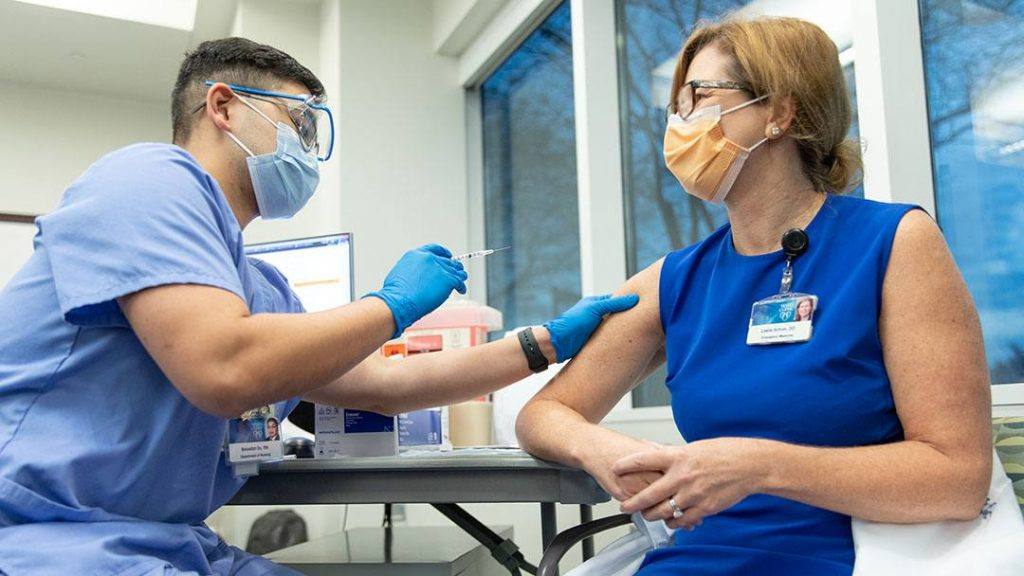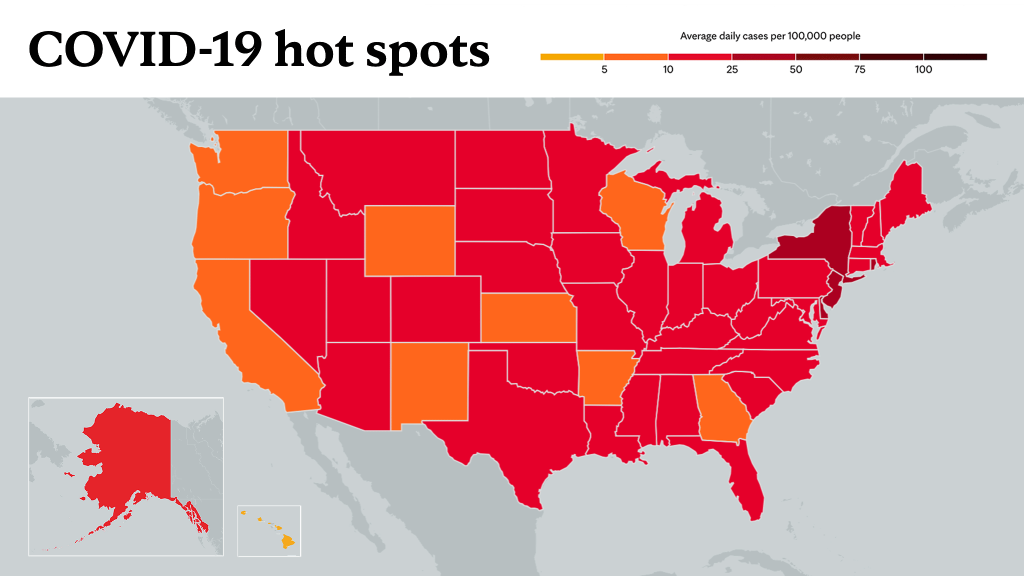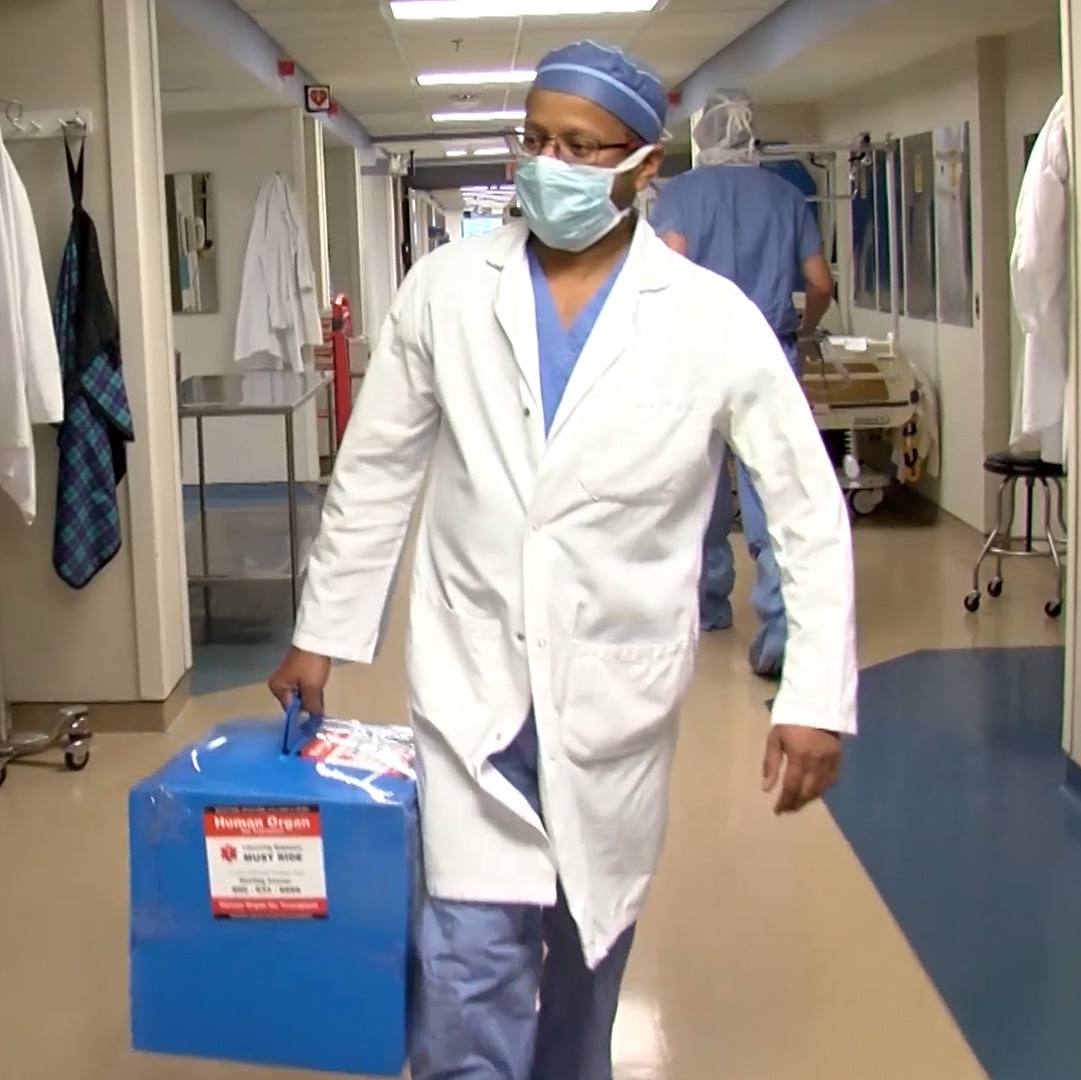
All vaccines could cause some degree of reaction, and the same is true for COVID-19 vaccines. Post-vaccine symptoms are typically mild and resolve quickly without the need to use any medication.
Common COVID-19 vaccine side effects include:
- Redness or soreness at injection site.
- Muscle aches.
- Fatigue.
- Headache.
- Fever or chills.
For some people, the second dose in a COVID-19 vaccine series is causing a stronger reaction and more side effects than the initial dose. The same was true during clinical trials.
Watch: Dr. Melanie Swift explains possible COVID-19 vaccine side effects.
Journalists: Broadcast-quality sound bites with Dr. Swift are available in the downloads at the end of the post. Please courtesy: "Melanie Swift, M.D./COVID-19 Vaccine Allocation and Distribution/Mayo Clinic."
In this Q&A, Dr. Melanie Swift, co-chair of the COVID-19 Vaccine Allocation and Distribution Work Group at Mayo Clinic, explains why vaccine side effects happen and what is known about symptoms following COVID-19 vaccination:
Why do people experience side effects from COVID-19 vaccines?
When we get vaccinated for COVID-19, we often experience some side effects. The reason that we get side effects is that our immune system is revving up and reacting. When you get sick, the same thing happens. Actually, a lot of the symptoms from illnesses that we get, like influenza and COVID-19, are actually not caused by the direct action of the virus, but rather by our immune system. Our bodies react, and that gives us these general symptoms like fever, achiness and headache.
Why are some people more likely to experience side effects after the second dose of a COVID-19 vaccine?
When you take two doses of a COVID-19 vaccine, the first dose is the first time for your body to see the spike protein that the COVID-19 vaccines produce, and your body begins to develop an immune response. But that happens slowly. Then when you come back with a second dose, your body is ready to attack it. Your body is primed by that first dose of vaccine. The second vaccine dose goes into your body, starts to make that spike protein, and your antibodies jump on it and rev up your immune system response. It's kind of like they've studied for the test. And it's acing the test.
How long could symptoms or side effects of COVID-19 vaccination last?
The vaccine side effects that we've seen in these large phase three trials resolve within about 72 hours of taking a COVID-19 vaccine. At most, those side effects can last up to a week. We really have not seen long-term side effects from COVID-19 vaccines beyond that, and that makes sense when you look at other vaccines. And we have a lot of experience with different vaccines. Long-term side effects are just basically unheard of in the vaccine world.
So with two months of follow-up data in people undergoing those clinical trials, and now even longer follow-up from the trials and our experience giving vaccines to the public, we really are not seeing any trend toward any long-term side effects.
Read COVID-19 vaccines: Get the facts to learn more about the different COVID-19 vaccines and the benefits of being vaccinated for COVID-19.
____________________________________
For the safety of its patients, staff and visitors, Mayo Clinic has strict masking policies in place. Anyone shown without a mask was either recorded prior to COVID-19 or recorded in a nonpatient care area where social distancing and other safety protocols were followed.
Information in this post was accurate at the time of its posting. Due to the fluid nature of the COVID-19 pandemic, scientific understanding, along with guidelines and recommendations, may have changed since the original publication date.
For more information and all your COVID-19 coverage, go to the Mayo Clinic News Network and mayoclinic.org.
Learn more about tracking COVID-19 and COVID-19 trends.








